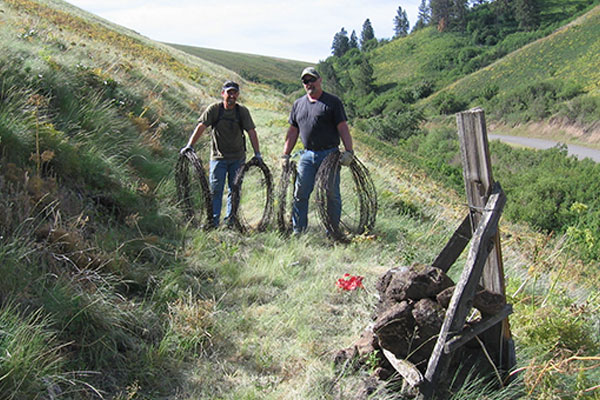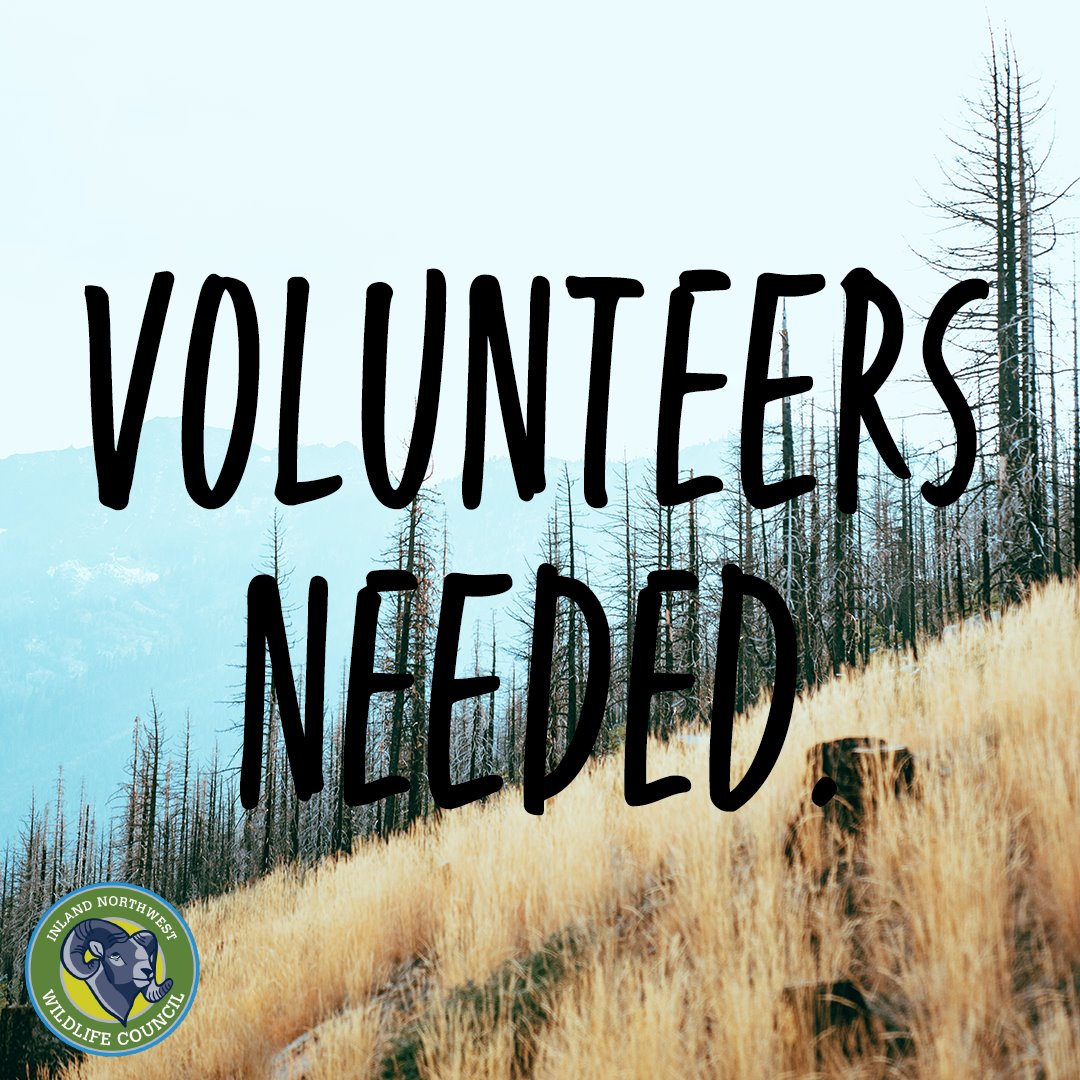Written by Ken McNaughton, M.F. At the Inland Northwest Wildlife Council (INWC), we believe that conservation is most impactful when it’s community-driven, and especially when it helps foster the next generation of environmental stewards. One way we’ve supported that mission over the years is by mentoring local youth working toward their Eagle Scout rank. Historically, many of these Scouts have partnered with INWC to build and install wheelchair-accessible hunting and fishing platforms. These platforms have become a signature project of ours and are well-known across the Inland Northwest as a symbol of inclusion and access to the outdoors. But last fall, a new idea took root, one that would support a winged species we care deeply about: the wood duck. One Scout’s Vision In September, a high school senior named Micah approached us about his Eagle Scout project. He admired the Council’s work but asked, “Is building a platform the only option?” Fortunately, we had recently been in touch with Todd Baarstad, a private lands biologist with the Washington Department of Fish and Wildlife (WDFW). During a conversation with Todd, we learned the Kalispel Tribe of Indians was looking to partner with other group(s) to build nesting boxes for wood ducks along the Pend Oreille River. The timing couldn’t have been better. We reached out to TC Petersen, a biologist with the Kalispel Tribe of Indians wildlife crew, who confirmed the need for the boxes and provided detailed construction specifications. When Micah heard about the opportunity, he eagerly pitched the idea to his Scout leaders and received full approval to move forward. With support from INWC, Micah raised the funds for materials and organized a group of younger Scouts for a build day in early October, just one week before the modern firearm deer season. A special thanks goes out to our INWC volunteers Rich Furry, Bill Spalding, and Z Zubrick, who helped prepare all the box components making the build day both efficient and educational. Weather Delays, But Not Defeat Once the boxes were assembled, the team hoped to get them installed quickly. But as often happens in fieldwork, nature and schedules refused to cooperate. The prime window for installation closed as fall turned to winter, and bad weather, conflicting schedules, and school finals delayed progress for several months. Then, on a warm July 1st, the stars finally aligned. With a group of Scout volunteers, a few supportive parents, Riley from the Kalispel Tribe of Indians wildlife crew, and INWC’s own Ken McNaughton, the team set out along the Pend Oreille River. Armed with step ladders, patience, and plenty of teamwork, the group installed all 25 nesting boxes, each one affixed to a tree 6 to 8 feet above the ground, along a nearly quarter-mile stretch of riverbank. In just two hours, the project was complete. And more importantly, the groundwork was laid for a new generation of wood ducks to thrive. Why Wood Ducks Need Our Help The wood duck (Aix sponsa) is one of the most visually striking and ecologically important waterfowl species in North America. With iridescent plumage and a fondness for wooded wetlands, wood ducks are unique among ducks because they are cavity nesters, they lay their eggs in natural tree cavities, often high above the ground. However, mature bottomland hardwood forests, the preferred nesting habitat for wood ducks, have been severely diminished due to development, logging, and wetland drainage. The loss of these natural cavities has made it increasingly difficult for wood ducks to find suitable places to nest. That’s where nesting boxes come in. Carefully designed and strategically placed, these artificial cavities provide a safe, stable, and predator-resistant environment for hens to lay their eggs. Nesting boxes also help regulate temperature and shield the nest from harsh weather, improving the chances of successful hatching and fledgling survival. When maintained properly, these boxes can be used year after year and are a proven tool for boosting local wood duck populations. A Win for Conservation and Community This project represents more than the installation of 25 wooden boxes. It’s a celebration of what happens when individuals, agencies, and organizations work together toward a shared goal. From the Kalispel Tribe of Indians wildlife staff to the dedicated INWC volunteers, to the leadership and follow-through of a single motivated Scout, this was conservation in action. Eagle Scout projects are designed to demonstrate leadership, service, and lasting impact. Micah’s project did all of that and more. His work not only contributes to the health of a local species but also provides a model for how young people can take meaningful action for wildlife and habitat conservation. At INWC, we’re proud to support projects like these, projects that create a ripple effect across generations. And as those wood duck hens begin to explore their new nesting options along the river, we’ll know that one young man’s question; “Is that my only option?”, helped lead to something truly special.
Tag Archives: volunteer
Camp Wooten Fence Project *Volunteers Needed*
Fences will be flying at the Wooten Wildlife Area June 2nd – June 4th! INWC volunteers and Assistant Wildlife Manager, Kari Dingman, will meet for a weekend of camping, gourmet food, and hard work removing fencing to provide habitat connectivity for the Blue Mountain elk herds. Thank you all for taking time out of your lives to help carry on this project that is an INWC tradition. For more information contact our big game committee (509) 487-8552 info@inwc.org
*Volunteers Needed* Spokane Kid’s Fishing Rod Assembly
Come one, come all – for fishing rod assembly night. Kids Fishing Day is coming up soon (May 6th), and we will need all volunteers ready to go. So, Thursday evening, April 20th, in the Council Hall – bring friends
Blue Mtn Fence Project – Volunteers Needed
Our fencing removal project supporting the Blue Mountain elk herd is back! Join us for a fun weekend of camping, friends, and conservation. Free camping at the wildlife office with water and toilet available. Volunteers are needed both on the mountain and at camp, we have a job for everyone at this event. Directions, and more camp information to come shortly. Contact the office for more information or to register (509) 487-8552, info@inwc.org
Disabled Access Route Clearing – Boundary Mtn (near Kettle Falls)
*Dates on this project are subject to change depending on volunteer availability For Route Patrols where we can cover two separate routes due to geographic proximity, part of the D.A. team will arrive ahead of the work day to set up a base camp. The actual work day will be the Saturday of the dates listed. Anyone wishing to be part of the project is welcome to camp the Friday night before, spend the day Saturday working the trails, inspecting/maintaining platforms, then join us for dinner at camp Saturday evening. UTV/ATV’s are welcome (stay on the trail). Due to our agreement with the USFS, we will patrol each of the following routes twice (in two phases) between spring and the first week of October. Contact our office or Committee Chair Ken McNaughton for more information or to RSVP. Office: (509) 487-8552 info@inwc.org Ken McNaughton: (509) 553-9135, inwc.ada@gmail.com
**CANCELLED DUE TO FIRE** Disabled Access Route Clearing – Betty Creek (near Kettle Falls)
This work project has been postponed due to fires in the areas near the gates. We will resume our efforts once the fire is out and the area is safe again. USFS – Betty Cr 48.71136 -118.32156 Contact our office or Committee Chair Ken McNaughton for more information. Office: (509) 487-8552 info@inwc.org Ken McNaughton: (509) 553-9135, access@inwc.org
Disabled Access Platform Installation – Rustlers Gulch
We will need a team of volunteers to help us install a canopy on the existing platform on the lower portion of Rustlers Gulch. Contact our office or Committee Chair Ken McNaughton for more information or to RSVP. Office: (509) 487-8552 info@inwc.org Ken McNaughton: (509) 553-9135, inwc.ada@gmail.com
Disabled Access Platform Installation – Blanchard Hump
We will need a team of volunteers to help us deploy a new wheelchair platform on Blanchard Hump. Contact our office or Committee Chair Ken McNaughton for more information or to RSVP. Office: (509) 487-8552 info@inwc.org Ken McNaughton: (509) 553-9135, inwc.ada@gmail.com
Disabled Access Route Clearing – Aladdin Mtn & Squirrel Meadows (Tiger & Blueslide)
For Route Patrols where we can cover two separate routes due to geographic proximity, part of the D.A. team will arrive ahead of the work day to set up a base camp. The actual work day will be the Saturday of the dates listed. Anyone wishing to be part of the project is welcome to camp the Friday night before, spend the day Saturday working the trails, inspecting/maintaining platforms, then join us for dinner at camp Saturday evening. UTV/ATV’s are welcome (stay on the trail). Due to our agreement with the USFS, we will patrol each of the following routes twice (in two phases) between spring and the first week of October. Contact our office or Committee Chair Ken McNaughton for more information or to RSVP. Office: (509) 487-8552 info@inwc.org Ken McNaughton: (509) 553-9135, inwc.ada@gmail.com
Disabled Access Route Clearing – Brewer & Mitchell Mtn (Chewelah)
Join us a fun-filled weekend of serving together for a great cause: Clearing dead-fall from Forest Service routes reserved for hunters with disabilities. This will be a one-day project due to all the work we accomplished in phase one. This is a GROUP activity. ATV’s & UTV’s are welcome. Chainsaws, loppers, and gloves needed. Mark your calendars. Call Ken McNaughton if you have any questions. Office: (509) 487-8552 info@inwc.org Ken McNaughton: (509) 553-9135, access@inwc.org




